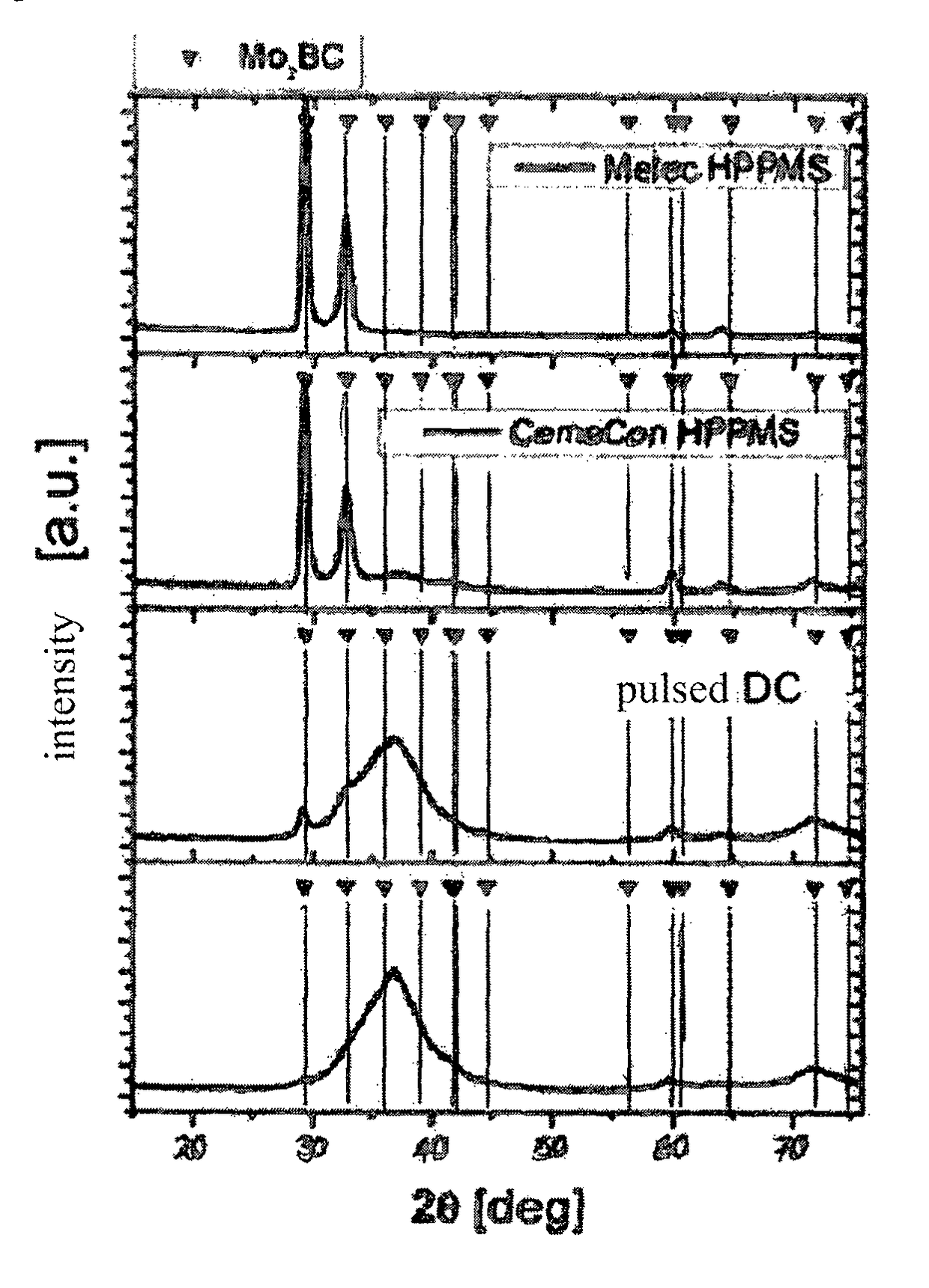Method for manufacturing a metal-borocarbide layer on a substrate
- Summary
- Abstract
- Description
- Claims
- Application Information
AI Technical Summary
Benefits of technology
Problems solved by technology
Method used
Image
Examples
Embodiment Construction
[0018]At first and for comparison purposes Mo2BC was deposited in a small coating chamber and by means of DC sputtering. The respective coating parameters are:
[0019]
GeneratorDCPower50 WTarget50 mm compound targetSubstrate temperature300-700° C.Basic pressure×10−5 mbar
[0020]Considered are the substrate temperature effect, roughness and hardness as well as the module of elasticity.
[0021]The coatings were applied at different temperatures. FIG. 1 respectively shows x-ray diffraction spectra (2 theta) of surfaces coated at substrate temperatures of 300° C., 450° C., 550° C., 650° C. and 700° C. It becomes apparent that only above 600° C. one may consider crystalline phases being present. Below 550° C. Ts amorphous or nano-crystalline phases are present. The modulus of elasticity as well as hardness increase as the substrate temperature decreases.
[0022]In opposition thereto and when applying the deposition by means of a pulsed power, already at 580° C. significant peaks were measured as ...
PUM
| Property | Measurement | Unit |
|---|---|---|
| Temperature | aaaaa | aaaaa |
| Angle | aaaaa | aaaaa |
| Angle | aaaaa | aaaaa |
Abstract
Description
Claims
Application Information
 Login to View More
Login to View More - R&D
- Intellectual Property
- Life Sciences
- Materials
- Tech Scout
- Unparalleled Data Quality
- Higher Quality Content
- 60% Fewer Hallucinations
Browse by: Latest US Patents, China's latest patents, Technical Efficacy Thesaurus, Application Domain, Technology Topic, Popular Technical Reports.
© 2025 PatSnap. All rights reserved.Legal|Privacy policy|Modern Slavery Act Transparency Statement|Sitemap|About US| Contact US: help@patsnap.com



